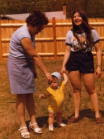Here is information on being the best caregiver you can be
Here is a way for nurses administrators, social workers and other health care professionals to get an easyceu or two
Follow alzheimersideas on twitter
Golden Carers
Christopher Columbus was an Italian explorer and navigator, who completed four voyages across the Atlantic ocean. He was the first European to discover a viable sailing route to the Americas, a continent that was unknown at that time.
Columbus was born in Genoa, Italy in 1451. His real name was Cristoforo Colombo. He died in 1506 aged 54.
Columbus had a hard time finding crew for his first epic voyage. Many people still believed that the Earth was flat and that the ship would sail to the edge of the Earth and fall into the abyss.
Columbus wanted to find an easy way to reach the East Indies (South-east Asia). He decided that the best route would be to travel west from Europe, around the globe. Other navigators had also thought about this option, but they didn’t try it because they thought the distance would be too great.
During his first voyage in 1492, he reached the New World instead of Japan as he had intended, landing on an island in the Bahamas archipelago that he named “San Salvador”.
Over the course of three more voyages, he visited the Greater and Lesser Antilles, the Caribbean coast of Venezuela and Central America. He never landed in North America.
Columbus was not the first European explorer to reach the Americas, having been preceded by the Viking expedition led by Leif Erikson in the 11th century, but his voyages led to the first lasting European contact with the Americas, inaugurating a period of exploration, conquest, and colonization that lasted several centuries.
Columbus never believed that he had discovered a ‘new’ continent. He thought that he’d established a new route to the East Indies. For this reason he called the inhabitants of the lands that he visited indios (Spanish for “Indians”). It remains so.
Columbus introduced horses to the New World. Their use spread and became essential to the natives.
The Taino population that inhabited the Caribean islands were completely extinct within 50 years of Spanish settlement.
In 1502, Columbus was stranded in Jamaica due to a shipwreck. After more than six months, tensions mounted. With famine now threatening, Columbus formulated a desperate plan. He knew there would be a lunar eclipse in a few days and warned the natives that his God was very upset and would show a clear sign of displeasure. Three nights later the eclipse darkened the moon and turned it red. The terrified natives gave him food and begged for mercy.
Both Seville (Spain) and Santo Domingo (Dominican Republic) claim to have the remains of Columbus.
No one knows exactly what Christopher Columbus looked like because all of the portraits of him that have survived were painted after he had died.
America is named after Amerigo Vespucci, the Italian explorer who realized that the lands that Christopher Columbus sailed to were part of a separate cont












